Wonderful introduction:
A clean and honest man is the happiness of honest people, a prosperous business is the happiness of businessmen, a punishment of evil and traitors is the happiness of chivalrous men, a good character and academic performance is the happiness of students, aiding the poor and helping the poor is the happiness of good people, and spring planting and harvesting in autumn is the happiness of farmers.
Hello everyone, today Avatrade Aihua Foreign Exchange will bring you "[Aihua Official Website]: US heating oil futures rose to three-week highs, and short-term trend analysis of spot gold, silver, crude oil and foreign exchange on June 9." Hope it will be helpful to you! The original content is as follows:
Global Market Review
1. European and American market conditions
The three major futures indexes adjusted narrowly, Dow futures rose 0.01%, S&P 500 futures fell 0.02%, and Nasdaq futures rose 0.13%. Most major European stock indexes fell, the Stoke 50 fell 0.28%, the German DAX30 fell 0.15%, the UK FTSE 100 fell 0.04%, and the French CAC40 closed flat.
2. Market news interpretation
U.S. heating oil futures rose to three-week highs
⑴ U.S. heating oil futures prices rose to $2.13 per gallon, a three-week high, driven by the rise in the wider energy market. ⑵ The market's optimism about Sino-US trade negotiations has increased, and officials from both sides plan to hold a new round of talks in London, which has eased concerns about tariff tensions and boosted global oil demand expectations. ⑶ Canadian wildfires briefly cut oil production by about 7%, but subsequent rainfall restored some production. ⑷ Data from the U.S. Energy Information Administration (EIA) showed that as of May 30, U.S. distillate fuel inventories increased by 4.2 million barrels, almost double the expected price upward pressure to some extent. ⑸ Looking ahead, weather forecasts show that temperatures will be higher than normal by mid-June, which may have an impact on heating oil demand.
Japanese investors sold German bonds sharply in April
⑴ Japanese investors conducted the largest monthly selloff of German bonds in more than a decade in April. ⑵The sale came after Germany's surge in borrowing costs in March due to debt rules reforms to increase spending. ⑶Japan Ministry of FinanceIt is shown that Japanese investors netted about 1.5 trillion yen (about 10.4 billion US dollars) of German bonds in April, the highest level since 2014. ⑷ Germany's previous decision to establish a 500 billion euro (about $546 billion) infrastructure fund and relax strict lending rules to increase defense spending, causing its bond yields to rise sharply in March. ⑸ At the same time, Japanese investors also netted sales of about 1.1 trillion yen of U.S. long-term Treasury bonds, the highest level since October last year. ⑹ U.S. Treasury yields rose by more than 70 basis points in April due to Trump's tariff remarks, raising questions about its safe-haven position. ⑺The yield on German bonds became a safe-haven option for investors in that month due to fluctuations in US Treasury bonds, and the yield fell sharply. ⑻ Japanese investors are the largest foreign holders of U.S. Treasury bonds and the main holders of eurozone Treasury bonds. Their investment trends are closely watched by the market.
Japan is considering repurchasing some ultra-long-term treasury bonds
⑴ Japan plans to repurchase ultra-long-term treasury bonds issued at low interest rates in the past to curb the sharp rise in treasury bond yields, according to two people familiar with the matter. ⑵This move is based on the government's plan to reduce the issuance of ultra-long-term treasury bonds (such as 20-year, 30-year and 40-year treasury bonds), as these treasury bonds have risen sharply recently. ⑶ Japanese Treasury bond yields fell after the market will take action to alleviate the oversupply of ultra-long-term Treasury bonds. ⑷ Japan's Ministry of Finance will make the final decision after meeting with bond market participants on June 20 and 23. Repurchasing ultra-long-term Treasury bonds requires budget approval and may take a long time. ⑸ Nomura Securities executive interest rate strategist Mari Iwashita said that reducing the new issuance of ultra-long-term treasury bonds may not solve the problem of oversupply, and the repurchase plan is a step in the right direction. ⑹ Japan's benchmark 10-year Treasury bond yield turned from an earlier rise to a drop of 0.5 basis points to 1.45%; the 30-year Treasury bond yield narrowed from an earlier rise of 4.5 basis points to a rise of 1.5 basis points to 2.89%. ⑺Last month, ultra-long-term Treasury yields rose to record levels due to lower demand from traditional buyers and global market concerns about rising debt levels, with the 30-year Treasury yield reaching a high of 3.185% on May 21. ⑻In Japan, the sale of ultra-long-term government bonds has also been affected by political pressures faced by Prime Minister Shigeru Ishiba, who has been criticized for tax cuts and large-scale spending policies before the July Senate election that could further increase Japan's massive public debt. ⑼ The distortion of Japan's Treasury market has prompted investors to pay attention to whether the Treasury and the Bank of Japan will take measures to curb the rise in ultra-long-term Treasury yields. ⑽ Sources said the Bank of Japan may decide at its next policy meeting from June 16 to 17 to maintain its current bond reduction plan until March next year, but consider slowing down the pace of reduction starting in the next fiscal year.
Malta's trade deficit hit an 8-month high in April
⑴Malta's trade deficit expanded to 401.3 million euros in April 2025, up from the same periodThe 364.2 million euros grew further in the same period of the year, setting the largest trade gap since August last year. ⑵The main reason for the widening of the deficit is the increase in imports and the decline in exports. Imports in April rose 1.4% year-on-year to 721 million euros, driven mainly by increased procurement of industrial supplies (14.3%) and fuel and lubricating oil (10.8%). ⑶Exports fell 7.7% year-on-year to 319.7 million euros, a two-year low. The main drag was the decrease in shipments of capital goods and other (-21.7%), consumer goods (-12.9%) and industrial supplies (-6.4%). ⑷ In the first four months of 2025, the country's trade deficit narrowed to 1.1937 billion euros, slightly lower than 1.2273 billion euros in the same period last year.
European natural gas prices remain stable. Norway's maintenance and the increase in wind power offset each other
⑴On June 9, wholesale natural gas prices in the Netherlands and the UK were basically the same. Norway's continued maintenance caused tightening of supply, but increased wind power output is expected to curb price fluctuations. ⑵ Data shows that the Dutch TTF hub near-month contract (TRNLTTFMc1) fell slightly by 0.12 euros to 36.15 euros/megawatt-hour (MWh); the UK next-day contract (TRGBNBPD1) stabilized at 85.70 pence/sam. ⑶EngieEnergyScan analysts pointed out that Europe's natural gas supply and demand tightened this week, and the decline in net storage injections may further expand the inventory gap. ⑷ According to data from the European Natural Gas Infrastructure Association, the filling rate of the EU gas storage is 50.97%. ⑸ Consulting agency Auxilione said that the current gas injection speed needs to be maintained to ensure sufficient reserves before winter, and the current inventory level is still close to the key trend line for 2022. ⑹Analysts said that the Asian monsoon season reduced energy demand and some spot LNG turned to Europe, eased the impact of Norway's unplanned gas disruptions. ⑺LSEG analyst Yuriy Onyshkiv predicts that temperature rebound and wind speed increase in the later period of this week will weaken gas demand. ⑻He pointed out that the fundamentals of the contract on that day and in the near future have not changed significantly, and the price will remain in the range of 35-36 euros/MWh. ⑼In the European carbon market, the benchmark contract (CFI2Zc1) rose 0.83 euros to 74.33 euros per ton.
The ECB's easing cycle is www.avaforexcn.coming to an end
⑴ The ECB's interest rate cut is www.avaforexcn.coming to an end and should use the summer months to observe data to determine whether further fine-tuning of policies is needed. ⑵ The European Central Bank just cut interest rates last week, after experiencing the fastest rate cut cycle since the global financial crisis in 2008/2009, and may temporarily stop further rate cuts. ⑶ The current European Central Bank deposit interest rate is 2%, and the market is expected to cut interest rates to 1.75% again before the end of the year. ⑷ Kazrimil believes that although economic growth may be weaker than expected, it is wrong to ignore the risk of inflation likely to rise. ⑸ He stressed that the data released in the summer will provide clearer guidance on whether further policy adjustments are needed.
GermanyThe bond yield fell slightly, and the market focused on ECB policy signals
⑴ German 10-year government bond yield fell to around 2.51%, a correction from the 5.4 basis points increase last week. The market closely monitors the progress of trade negotiations and the direction of the European Central Bank's policy. ⑵ The European Central Bank cut interest rates by 25 basis points last week to its lowest level since November 2022, while lowering inflation expectations from 2025 to 2026. It is worth noting that the bank implies that the current easing cycle may be nearing its end, which is contrary to market previous expectations.
The Japanese government is considering repurchasing ultra-long-term government bonds to cope with rising yields
⑴ On June 9, it was reported that the Japanese government is considering repurchasing some ultra-long-term government bonds previously issued at low interest rates. ⑵This move will form a policy www.avaforexcn.combination with the Japanese government's recent plan to cut ultra-long-term government bond issuance to cope with the sharp rise in bond yields. ⑶ The Japanese Ministry of Finance is trying to coordinate actions with the Bank of Japan, which may also reassess the bond reduction plan for next year. ⑷ Analysis points out that relevant policies need to cooperate with the Japanese government's fiscal plan to alleviate the country's huge public debt pressure.
3. Trends of major currency pairs in the New York Stock Exchange before the market
Euro/USD: As of 20:26 Beijing time, the euro/USD rose, and is now at 1.1408, an increase of 0.12%. Before the New York Stock Exchange, the price of (EUR/USD) rose in recent intraday trading, supported by positive signals from (RSI), after it declined from a significant oversold level, providing bullish momentum and strengthened by continuing to trade above the EMA50, in addition, the price is stable, the short-term trend line is bullish, with a slight support bias.
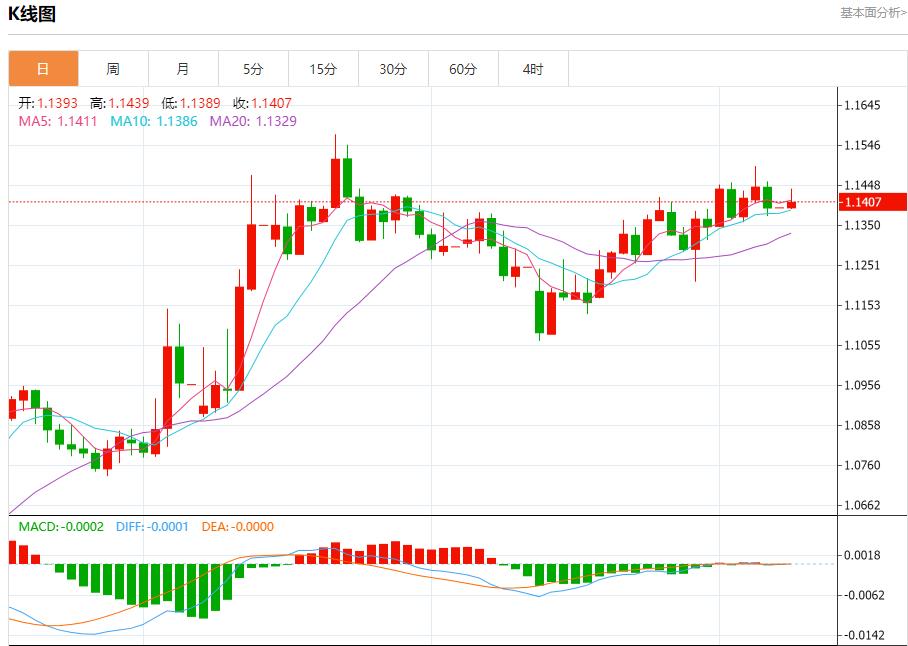
GBP/USD: As of 20:26 Beijing time, GBP/USD rose, now at 1.3541, an increase of 0.12%. Before New York, the (GBPUSD) price rose on the last trading day after falling due to the stability of key resistance at 1.3585, looking for higher lows as the basis, which could help to get the positive momentum needed to break through that resistance.
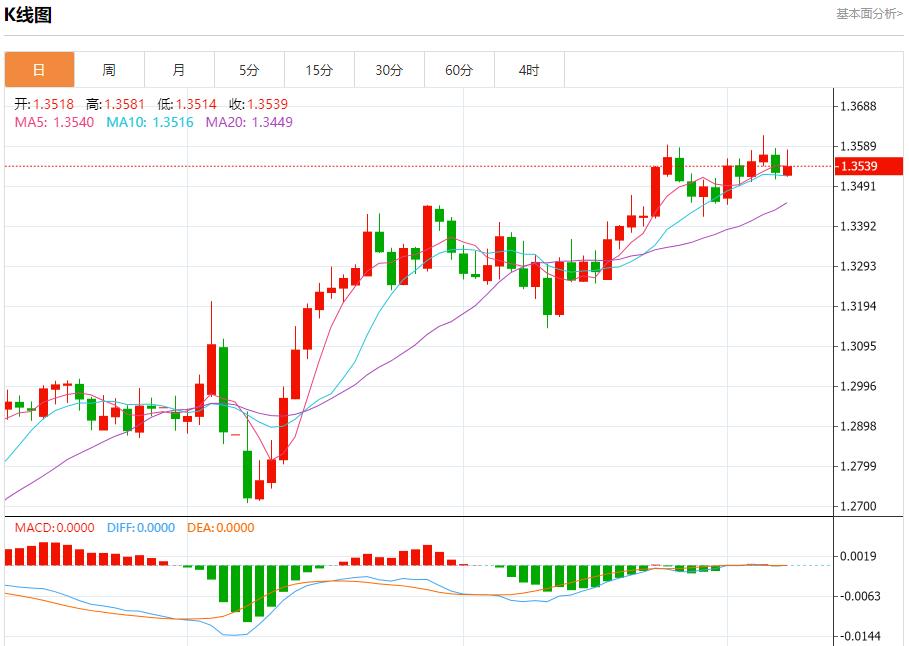
Spot gold: As of 20:26 Beijing time, spot gold rose, now at 3315.81, an increase of 0.12%. Before the New York Stock Market, the (gold) price rose on the last trading day, trying to recover some of the previous losses as it attempted to transfer some obvious oversold conditions to (RSI), especially with the emergence of positive signals there, this rise came after technical pressure as it exited the range of the bull channel that restricted its decline to reach important technical resistance represented by the EMA50, adding strength to the area as a resistance to test prices.
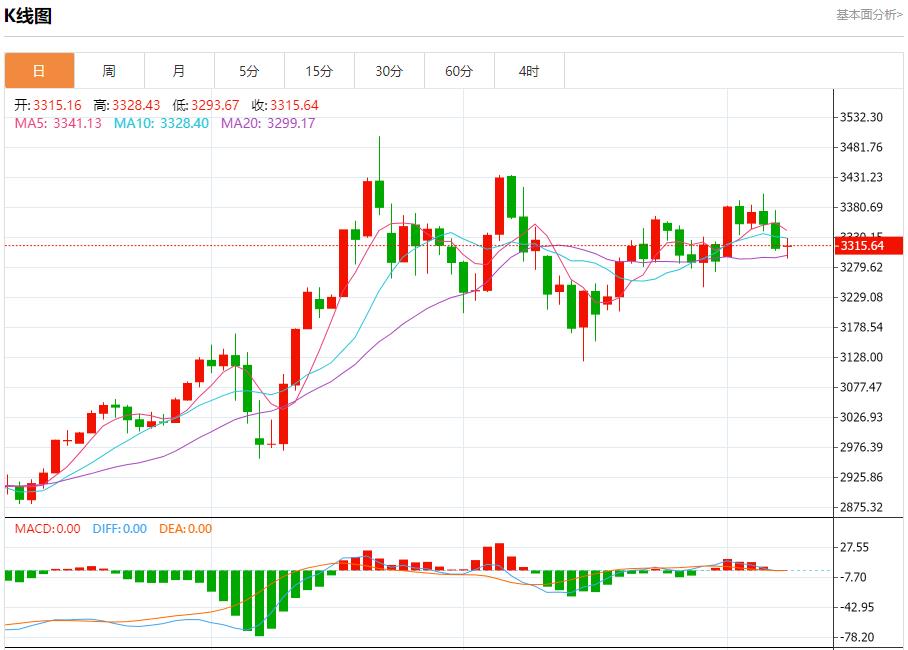
Spot silver: As of 20:26 Beijing time, spot silver rose, now at 36.298, an increase of 0.93%. Before the New York Stock Exchange, the (silver) price rose on the last trading day, attacking the current resistance of $36.25, supported by continuous trading above the EMA50, and www.avaforexcn.completely dominated the main bullish trend on the short-term basis. It was noted that after reaching the exaggerated oversold level, a positive divergence was formed on the (RSI), and positive overlap signals on the (RSI) began to appear, strengthening positive behavior.
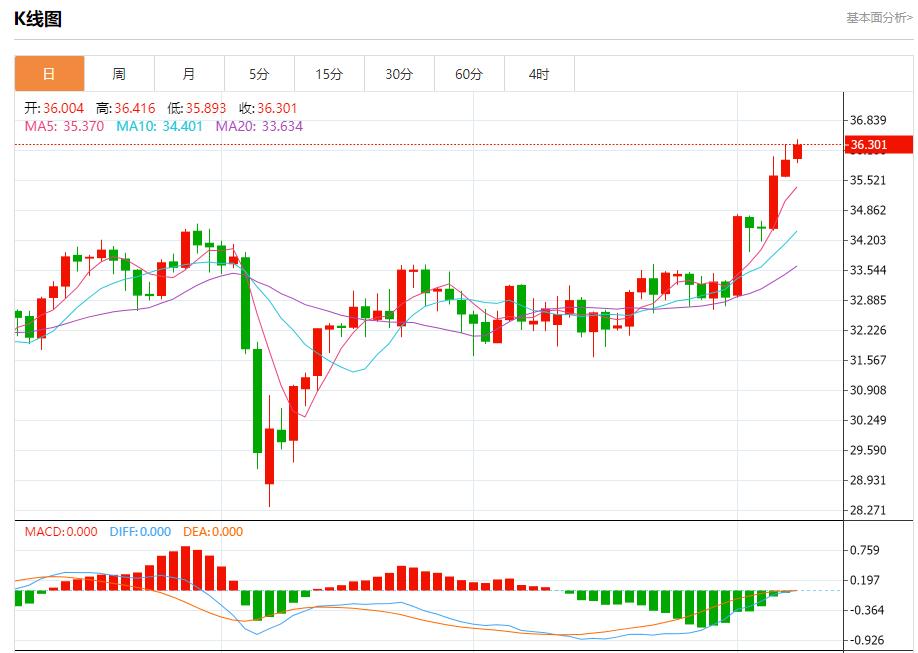
Crude oil market: As of 20:26 Beijing time, U.S. oil rose, now at 65.060, an increase of 0.74%. Before the New York Stock Exchange, the (crude oil) price rose in recent intraday trading, with bullish trends dominant, and its trading was carried out along a slash, with positive pressure from trading above the EMA50 persisting, on the other hand, we noticed negative signals (RSI) after reaching overbought levels, which is a sign of dominance in buying power, but it may slow down the price upcoming rally.
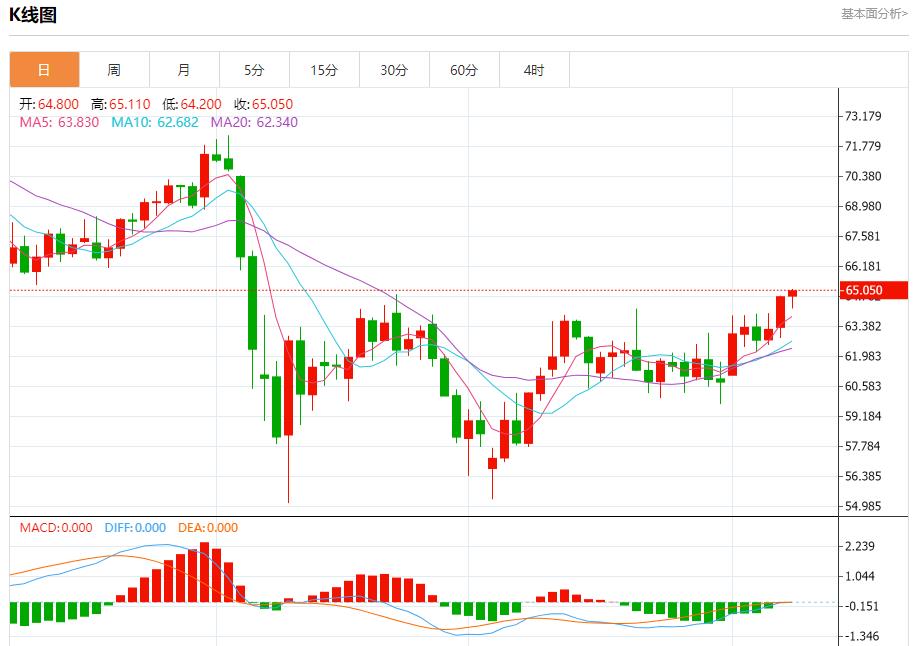
4. Institutional view
Citi: As the market's concerns about US assets deepen, gold can provide protection for investment portfolios
Citigroup said that at a time when the market has concerns about US assets (including the possible impact of tax reform), gold and some non-U.S. stocks may provide protection for investment portfolios. “We have recently increased our holdings of gold and non-U.S. stocks to diversify our portfolios in response to the potential decline in U.S. asset demand,” CitiWealth chief investment officer Kate Moore said in a note. Moore and colleagues Bruce Harris, Joseph Fiorica, and Jeff Puckette wrote in the June 6 report that the tax reform bill under consideration in the Senate could have an impact on the fiscal deficit, and the House version of Section 899 also involves potential taxation on foreign investment.
Institution: Thursday will usher in a key U.S. 30-year Treasury auction, with yields hovering at nearly 5%.
XTB's Kathleen Brooks said the next week will be an important week for the U.S. bond market. On Thursday, the U.S. will auction 30-year U.S. Treasury bonds, and its yield is currently hovering near 5%. Three weeks agoInvestors have been cautious since 20-year Treasury auctions. Brooks said high long-term issuance costs have exacerbated financing pressures as the U.S. government attempts to pass a budget that will increase national debt. If subsequent trade negotiations do not go well, worsening risk appetite may mean weak demand for the auction. She said the auction could go smoothly if risk appetite remains strong. Tradeweb data shows that the 30-year U.S. Treasury yield rose by 1 basis point to 4.972%.
The above content is about "[Ihua Official Website]: U.S. heating oil futures rose to a three-week high, and the short-term trend analysis of spot gold, silver, crude oil and foreign exchange on June 9" was carefully www.avaforexcn.compiled and edited by the Avatrade foreign exchange editor. I hope it will be helpful to your trading! Thanks for the support!
Every successful person has a beginning. Only by having the courage to start can you find the way to success. Read the next article now!















